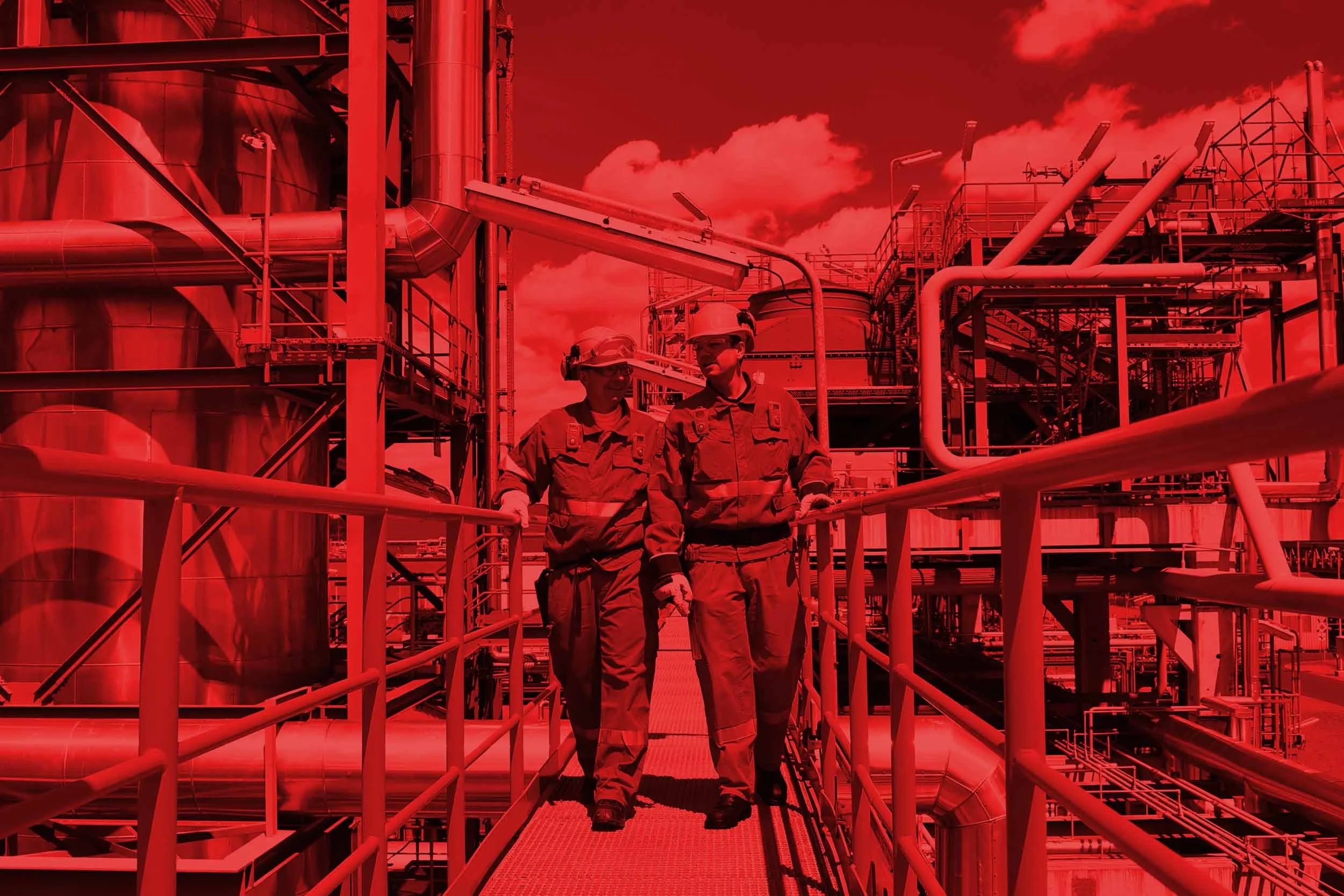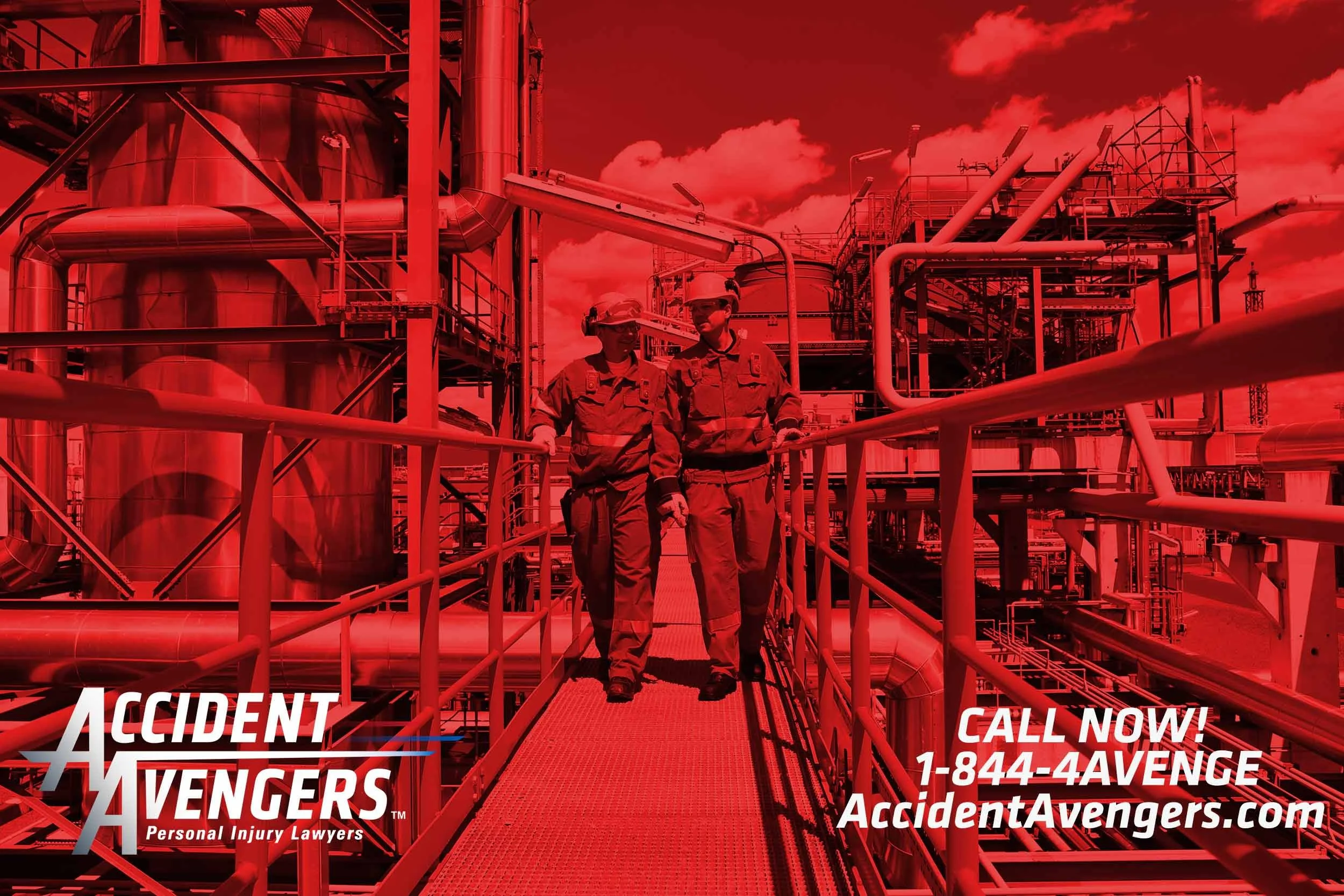
Texas Chemical Exposure & Toxic Tort Attorneys:
Ready to Fight Corporate Pollution

TEXAS TOXIC ALERT: Did corporate negligence cause your cancer?
When a corporation prioritizes profit over safety, causing life-altering illness or death from chemical exposure, the Accident Avengers mobilize. We are a team of specialized Texas Toxic Tort Lawyers with a wealth of experience in handling complex litigation across the Gulf Coast and major cities. Our expertise is dedicated to securing maximum compensation for victims diagnosed with serious illnesses like leukemia or Mesothelioma, and holding polluters accountable for long-term health catastrophes that result from negligence and exposure.
If you or a loved one has suffered a serious illness (including leukemia, Mesothelioma, or respiratory failure) due to workplace or environmental chemical exposure, you need aggressive legal power now. Call the Accident Avengers today for a FREE, urgent consultation: 1-844-428-3643
What is a Chemical Exposure (Toxic Tort) Claim?
A Toxic Tort claim is a specialized personal injury lawsuit filed against manufacturers, employers, or property owners who fail to protect individuals from dangerous chemical substances. Unlike a standard car wreck case, the difficulty lies in proving the causation—that the specific exposure, sometimes years or decades in the past, directly led to the current illness. The law requires linking a defendant's specific toxic product or actions to the victim's resulting disease, a challenge that requires merging law with cutting-edge medical science.
Distinguishing Workplace (Occupational) vs. Environmental Exposure
The legal theories and potential defendants shift dramatically based on where the exposure occurred:
Workplace (Occupational) Exposure: This involves employees, contractors, or laborers injured while working in industrial settings (refineries, construction, fracking sites). Claims often focus on violations of OSHA standards and safety regulations (29 CFR) by the employer, failure to provide adequate PPE, and inadequate air quality monitoring. Liability targets the direct employer and often third-party contractors or equipment manufacturers.
Environmental (Community) Exposure: This involves residents, often children, who live near a chemical plant, waste disposal site, or industrial corridor (like the Houston Ship Channel). Claims focus on illegal dumping, catastrophic releases, and chronic air or water contamination. Liability targets the corporations responsible for the pollution impacting the surrounding community and requires them to demonstrate that toxins traveled off-site and caused harm.

Common Hazardous Chemicals, Industries, & Long-Term Effects
Our Accident Avenger Attorneys focus on exposures to substances known to cause severe, life-changing health damage. The injury is typically a slow, insidious process that is difficult to trace without expert help.
1. Benzene: The Invisible Cancer Threat
Benzene is a highly volatile, colorless chemical used to make plastics, resins, and nylon, and is a significant component of crude oil and gasoline.
Industry Focus: Refineries, chemical plants, storage tank cleaning operations, and offshore drilling.
Associated Illnesses: Benzene is a proven human carcinogen. Exposure is directly linked to Acute Myeloid Leukemia (AML), Myelodysplastic Syndrome (MDS), Aplastic Anemia, and other fatal blood disorders, a fact supported by decades of CDC and independent scientific research.
Corporate Negligence: We investigate cases where employers failed to substitute less toxic solvents, were unable to train workers on permissible exposure limits (PELs), or improperly ventilated enclosed work spaces, leading to massive doses of inhalation.
2. Asbestos & Silica: The Dust of Death
While the use of asbestos is heavily restricted, legacy exposures continue to lead to tragic diagnoses decades later.
Asbestos Exposure: Occurs in shipbuilding, construction, renovation, and demolition of older industrial sites. It leads almost exclusively to Mesothelioma, a rare and aggressive cancer of the lining of the lungs/abdomen, and severe lung scarring (Asbestosis).
Silica Exposure: Predominant in the fracking industry, quarrying, and construction. Breathing respirable crystalline silica dust causes Silicosis, an incurable, progressive lung disease, and significantly increases the risk of lung cancer and tuberculosis.
Corporate Negligence: Claims focus on manufacturers who hid the dangers of their products for decades, and employers who failed to provide proper respirators or conduct legally mandated air monitoring.
3. Acute & Catastrophic Exposures
Hydrogen Sulfide (H2S): This deadly gas, common in oil and gas production, can kill instantly at high concentrations by paralyzing the respiratory system. Acute, non-fatal exposure often leads to permanent neurological damage, memory loss, and severe respiratory injury.
Toxic Spills and Emissions: Injuries resulting from massive, sudden releases of toxins during plant upsets, fires, pipeline leaks, or transportation accidents that impact both workers and the surrounding community with immediate chemical burns and respiratory failure.
Take Immediate Action and Call The Accident Avengers
If you or a loved one has been diagnosed with a severe illness after working in or living near a Texas industrial facility, the time to act is now.The Statute of Limitations for toxic tort claims can be complex. Typically, Texas law requires a personal injury claim to be filed within two years, as defined by the Texas Civil Practice and Remedies Code §16.003. However, in cases of chronic, latent illness like cancer, the clock may not start running until the victim knew or reasonably should have known that the chemical exposure caused their illness—this is called the Discovery Rule.
Because corporations will argue you "should have known" earlier, it is crucial to contact a lawyer as soon as a cancer or severe disease diagnosis is linked to a chemical exposure source. Do not delay your legal options while waiting for further medical confirmation.

The Legal Challenge: Meeting the Daubert Scientific Standard
Toxic tort litigation is a battle of experts. The core legal challenge is satisfying the Daubert Standard—the federal rule governing the admissibility of scientific evidence in court, as outlined in the Federal Rules of Evidence Rule 702. Simply having a medical diagnosis is not enough; the science linking the exposure to the disease must be rigorously proven as reliable, peer-reviewed, and generally accepted in the scientific community.
1. Building the Chain of Causation
Our forensic and legal strategy focuses on proving a transparent, unbroken chain of causation:
General Causation (The Chemical Link): We use Epidemiologists and Toxicologists to prove that the specific chemical can cause the particular disease (e.g., Benzene causes AML).
Specific Causation (The Individual Link): We use Industrial Hygienists and the victim's medical experts (e.g., Oncologists) to prove the victim was exposed at a level and duration that actually did cause their disease. This involves modeling exposure over time based on job sites, product use, and air monitoring records.
2. Identifying Multiple Responsible Parties
In many chronic exposure cases, the victim was exposed to products from dozens of manufacturers over decades. We pursue claims against every entity that contributed to the injury:
Employer/Facility Owner: For OSHA violations, failing to provide proper Personal Protective Equipment (PPE), or failing to monitor air quality.
Chemical Manufacturer/Supplier: For failure to adequately label, warn of hazards, or provide safe handling instructions (Product Liability).
Property Owner: If the exposure occurred on leased property where environmental contaminants were known but not remediated.
3. Defeating Corporate Defenses
We anticipate and aggressively counter common corporate defense tactics, such as:
Arguing the victim was responsible for their own safety.
Claiming the illness was caused by smoking, genetics, or exposure elsewhere, not the defendant's chemical.
Attempting to destroy or alter maintenance, safety, and air monitoring logs. We issue immediate spoliation letters to preserve all critical corporate evidence.
Core Industrial Negligence Issues in Texas
These three recent incidents highlight the dangers of corporate negligence in Texas's industrial sector:
ONEOK Gas Explosion: A massive explosion in Mont Belvieu severely burned three workers, forcing a community shelter-in-place due to the release of volatile gases. Read more about the ONEOK Explosion
Houston Ship Channel Lawsuit: Environmental groups sued industrial operators over chronic, illegal releases of the carcinogen 1,3-Butadiene, which raises cancer risks in nearby residential areas. Read about the Houston Ship Channel Lawsuit
LyondellBasell Fine: The TCEQ fined LyondellBasell only $\text{\$85,000}$ for air quality violations, a settlement that represented less than 6% of the potential maximum fine. Watch news report on the LyondellBasell Fine

Comprehensive Damages for Long-Term Illness
A chemical exposure injury is often a life sentence of medical care, pain, and financial distress. The compensation we fight for is designed to cover the total, long-term impact on the victim and their family, often totaling millions over a lifetime.
Types of Compensation We Secure:
Lifetime Medical Costs: Future costs of treating chronic or terminal illnesses, including chemotherapy, radiation, organ transplants, experimental treatments, hospice care, and specialized pain management.
Lost Earning Capacity: Complete recovery of all wages and career advancement potential lost due to the inability to work caused by the illness, often encompassing decades of lost income.
Pain, Suffering, and Emotional Distress: Compensation for the physical agony of the disease, the pervasive fear of cancer recurrence, severe anxiety, and the profound loss of life enjoyment.
Loss of Consortium: Damages for the surviving spouse and family members for the loss of companionship, support, and relationship quality caused by the illness or death.
Punitive Damages: In cases where a corporation demonstrated gross negligence or willful disregard for human life (e.g., hiding known dangers or knowingly dumping toxins), we aggressively seek punitive damages to punish the corporation and deter future misconduct.
Do Not Wait! Call the Accident Avengers Today!
Do not accept a severance package or sign any release documents from your former employer. Do not delay your medical diagnosis. Contact the Accident Avengers today for a FREE, confidential Toxic Tort case evaluation. We are your shield against corporate negligence and your sword for justice. Contact the Accident Avengers now for a FREE, no-obligation case review. We only get paid when we win your claim. Call 1-844-428-3643


